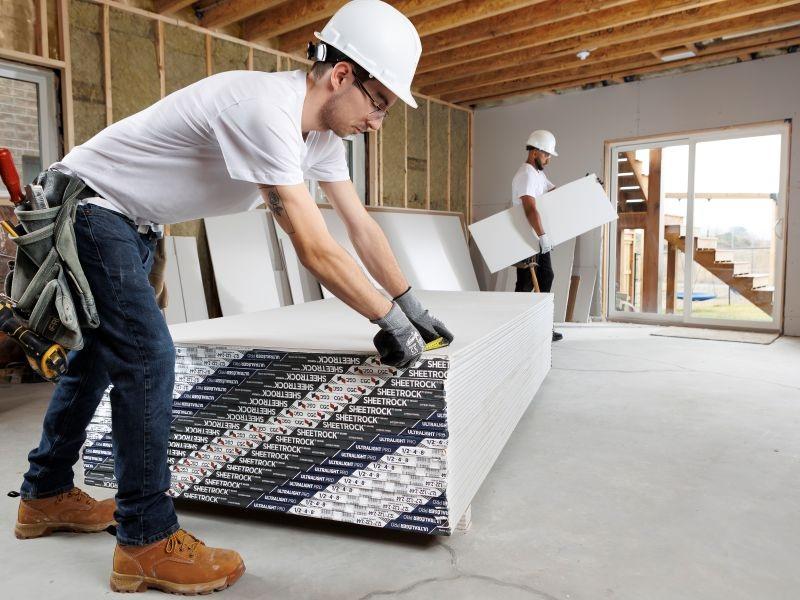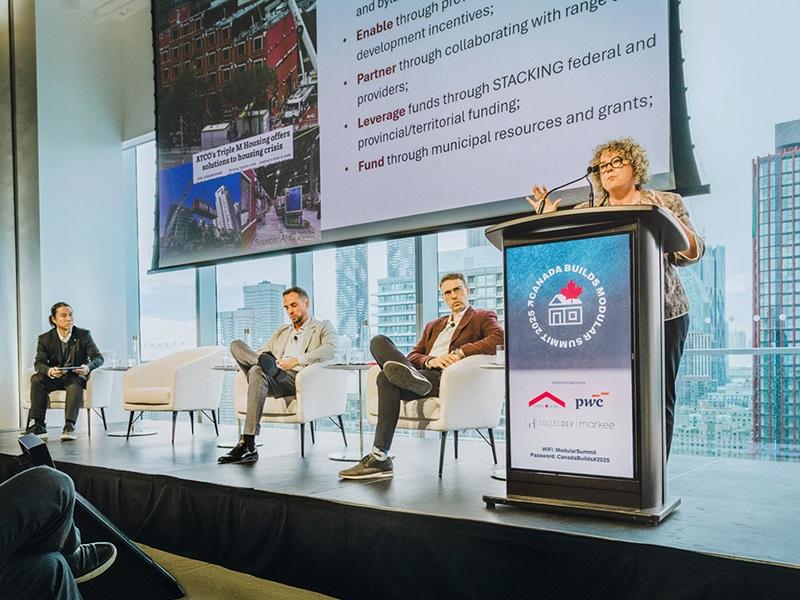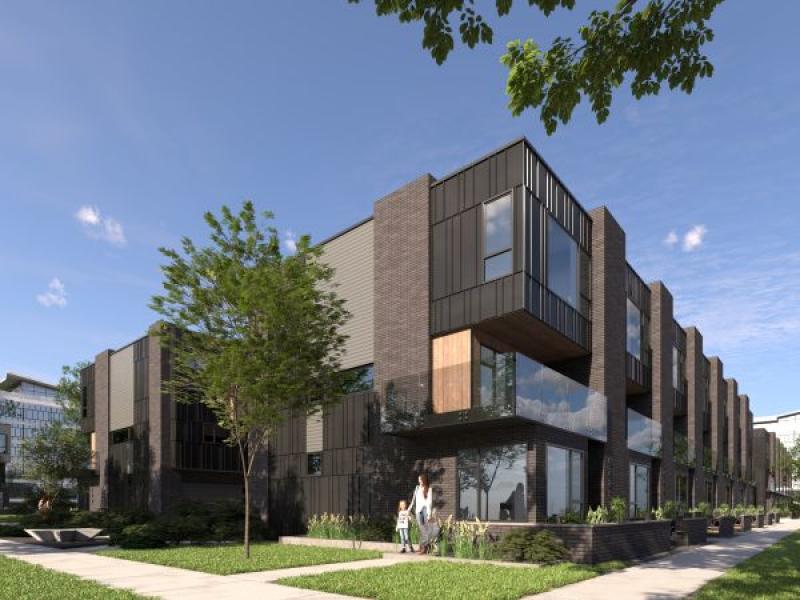
CGC Inc. is working to lower the embodied carbon in housing and other forms of building construction through its line of gypsum wallboard products, vice president Sid Tetz told RENX Homes.
Based in Oakville and with its historic roots in Nova Scotia, CGC manufactures ceiling, wall, floor and roofing products in six facilities located across Canada. Drywall products are ubiquitous, integral components in buildings spanning many real estate, and commercial real estate, sectors.
The resource extraction, manufacturing and transportation of building materials are large sources of climate-warming pollution. So much so that the Global Real Estate Sustainability Benchmark calculates one third of the greenhouse gas emissions that stem from buildings trace back to the life cycle of their component materials, known as embodied carbon.
With its 2030 sustainability targets to achieve, including reducing its carbon emissions, waste to landfill and energy use, CGC is addressing the issue by changing how it manufactures, the way it designs the materials, and supporting more sustainable forms of construction.
“We’ve always been innovating on the front of the weight of the product . . . When you think about the embodied carbon of the products that we’re making, we have a high-level focus on that space,” Tetz said.
CGC's light, low-carbon materials
An example of this effort is UltraLight PRO. The gypsum panels are among the company’s thinnest to date at half an inch; and the weight is reduced by up to nine per cent compared to its UltraLight panels, while maintaining integrity the company states.
Though a weight reduction up to nine per cent may not sound like much, Tetz noted a typical eight-foot gypsum panel weighs approximately 30 pounds and a typical construction project will require hundreds of panels. The benefits quickly add up, he said, not only making it easier for construction workers but producing fewer transportation-related carbon emissions and requiring less raw materials.
UltraLight PRO is made by pouring slurry between two pieces of paper and running it through an energy-efficient oven. Excess heat is recovered during the manufacturing process to squeeze out even more energy savings.
CGC says the combination of slimming down the panels, energy-efficient manufacturing and use of renewable electricity can cut the greenhouse gas emissions of UltraLight Pro by up to 37 per cent compared to the industry average for a half-inch gypsum panel.
At CGC’s manufacturing facilities, efforts are made to install heat recovery systems where possible, Tetz said, and to reduce water consumption.
The company’s upcoming 210,000-square-foot factory in Wheatland County, Alta is geared to being among its greenest to date.
It will be powered by clean electricity and an on-site solar field. A high-efficiency, gas-fired kiln will recover evaporated water, reducing energy consumption. Measures will be taken to recycle all of the production waste back into manufacturing, creating as close to a zero-waste site as possible.
Supporting sustainable construction methods

In addition to addressing its operational and embodied carbon, CGC is also supporting more sustainable construction methods, Tetz said.
The “resurgence” in panelized and modular construction to boost Canada’s housing supply is a trend the company is capitalizing on, he said, with products like UltraLight Panels Firecode X, a lightweight drywall material.
With weight being critical to sustainable and modular construction, “any weight reduction is beneficial,” Tetz said.
Studies show off-site construction methods typically produce less waste. Research suggests modular construction can reduce waste by up to 46 per cent and greenhouse gas emissions by as much as 22 per cent.
While he admits sustainable building materials often carry a cost premium, Tetz said that can be offset with more productive ways of construction.
“You can’t just produce a more sustainable product. You need to produce a more sustainable product that offers productivity gains.” If that is not possible, Tetz said it may not be the wisest decision to bring the product to market today, given the parallel focus on affordable housing construction.
CGC will continue to innovate on lighter, lower-carbon drywall materials, Tetz said.
Other low-embodied carbon materials
The building materials industry has been pioneering on other innovations to address embodied carbon.
Mass timber has been growing in popularity for its capacity to trap carbon, with residential buildings such as Adera Development Corporation’s upcoming townhome community Kestrel in West Coquitlam being made from the engineered wood.
KingSett Capital designed the unit sizes and building mechanical systems at the first phase of Valhalla Village around using fewer materials and hence producing less embodied carbon.
Mattamy Homes’ Alberta division tested the use of ECOPact, a low-carbon concrete developed by Lafarge, which has been used to construct over 2,000 homes and cut embodied carbon by almost 4,000 tonnes of carbon dioxide equivalent compared to conventional concrete.










